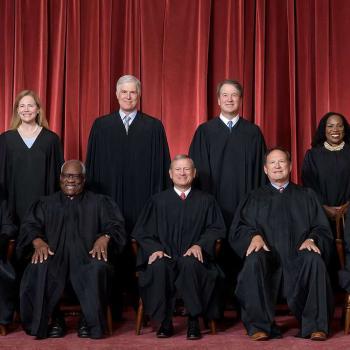He makes the distinction between a politics of mobilization and a politics of persuasion. Instead of trying to persuade voters of the wisdom of particular policies, both Democrats and Republicans sought to mobilize the voters who already thought they way they did. Harris writes (my bolds):
It was often said that this election was about “mobilization” — stimulating turnout among people whose minds are made up — rather than “persuasion,” growing the pool of potential supporters through arguments to people whose minds are open. True enough. There has never been a better mobilization politician, or one whose style left fewer open minds in his wake, than Donald Trump.
But 2020 showed the limits of mobilization politics. There is a near-term problem, and a long-term one.
In the moment, the things that a candidate or party do to mobilize their side, even or especially when successful, typically also motivate the other side. It was Trump, on his way to winning the second-most votes in American history, who helped Biden win the first-most. The Democratic turnout for the presidency didn’t translate to gains in the House and Senate; turns out there are still some ticket-splitters out there.
In a larger sense, even if a mobilization strategy wins an election it is a persuasion strategy that will win an argument. . . .There are many places in the country where progressives need better arguments to reach people who don’t currently support their goals.
Donald Trump’s campaign was all about motivating his base to turn out. The president made no effort to make himself more palatable or to win over uncertain voters about the wisdom of his policies. He ridiculed and demonized those who opposed him and refused to water down his personality or his approach to government. And, remarkably, this approach almost worked! His supporters loved his authenticity and his refusal to play political games. They were fired up and they voted for him in large numbers, more, in fact, than voted for him in 2016.
I would add, though, that Trump did make an appeal to persuade a group of voters who had not been part of his base. Namely, Blacks and Hispanics. His campaign made a strong effort to reach out to these minorities, whom Democrats pretty much took for granted. Despite the accusations that Trump is racist and anti-immigrant, over one out of eight, 12%, black voters and nearly one out of three, 32%, Hispanic voters cast their ballots for Trump. (For a more precise breakdown of the headway Trump made with minority voters, including Asians, since 2016, see this, which confirms that a majority of immigrants from Communist countries, such as Cuba and Vietnam, voted over Trump, over the seemingly socialist friendly Democrats. Trump also gained among women, with his support slipping only among white men.) Apparently, large numbers of ethnic and religious minorities recognized that their class interests were more in line with Trump’s white working class base, as opposed to the “identity politics” promoted by Democrats. With those important exceptions, which did add significantly to Trump’s vote, the overall strategy of mobilization fell short.
Meanwhile, Democrats pursued a similar strategy of mobilizing their base of affluent college-educated progressives and “identity politics” advocates. Their anti-Trump message did strike a chord, augmented by Trump’s own successful efforts to motivate his base. But the Democrats failed to persuade voters of the wisdom of their progressive proposals. Joe Biden tried to distance himself from policies such as defunding or dismantling the police, the Green New Deal, socialized medicine, and other radical proposals. But they remained associated with the Democrats. As a result, most Americans voted for Biden, but voted for Republicans in the Senate, House, and state legislatures.
Both Democrats and Republicans would do well to rediscover the politics of persuasion. This means using reason and evidence, instead of just inflaming the passions. Instead of insulting their opponents and thus making them more defensive and more antagonistic, successful politicians will try to win them over.
Republicans won a majority of the nation’s votes only once in the last eight elections (G. H. W. Bush in 2014), depending on the Electoral College to give them their victories. But if conservatives expect to fully implement their beliefs, they will need to win the hearts and minds of most Americans.
Image: persuasion by Luis Prado from the Noun Project. CC 3.0.
 In the aftermath of the election, both parties are wishing that they had done better. As a result, both parties will be debating about how they might be more effective in winning voters.
In the aftermath of the election, both parties are wishing that they had done better. As a result, both parties will be debating about how they might be more effective in winning voters.










